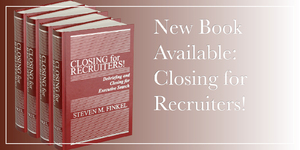The chaos in some sectors of the job market is offset by strong demand and stability in others. This theme plays out in the highly turbulent food service, leisure and hospitality, and retail industries which are most impacted by the tighter labor market. These industries must scramble to gain an edge by offering better compensation and benefits to stay competitive. On the other hand, qualified professionals are in short supply and are highly sought after by firms in the fields of technology, healthcare, and “green” solutions. This article will explore some of the factors driving these trends. An excellent analysis of this market is available at www.pegstaff.com.2
In general, according to Peg Staffing & Recruiting, “although there is still a labor shortage due to open jobs, there has been a steady decline in employees leaving their current job, creating stability in what has been a volatile market. Job seekers are staying at their jobs longer due to the reluctance of changing jobs in an unstable market.” Many factors contribute to this, including the sense by employees that many employers are teetering on the edge of insolvency in their struggle to stay in operation in the face of high operating costs, high interest rates, increasing regulatory constraints, social unrest, and political uncertainty.
Food service, leisure and hospitality, and retail industries are being pummeled by increases in the minimum wage and many employers are finding it impossible to stay profitable. Add these burdens to the existing (and ever-increasing) operating costs and many businesses are opting to close their doors. A countertrend can be seen by some employers adopting Artificial Intelligence (AI) and installing non-manned kiosks and robotic means of doing repetitive tasks. Investment of capital in this way can make unnecessary the paying of higher wages, since some of the staff will be displaced. And there is nothing new in this since every technological advance has led to waves of change rippling through the job market.
Another interesting phenomenon is that of immigrants flooding into the food service, leisure and hospitality, and retail industries serving to drive down the cost of labor since these workers will often accept less pay and want to maintain a low profile. This inundation challenges the existing workforce and may cause many workers to seek training to upgrade their skills to stay employable. Peg notes that “by developing their networking skills, adapting to the new trends and focusing on learning new skills, job seekers can turn what was once difficult into less of a competition." It is not clear yet what impact the surge in immigration will ultimately have on the job market and how the masses of potential new workers will be assimilated and to what extent vetting means such as E-Verify will be effective.
The healthcare industry is a bright spot with job growth continuing. Nurses, including traveling nurses, are in great demand and demand for healthcare services remains strong. Booking times to see medical professionals have lengthened due to the increase in demand.
For technology-related industries the outlook for demand is strong but a short-fall in available candidates remains a problem. Demand is high for those with skills in digital design and systems and who can easily adapt to rapidly changing technologies in the workplace. Those knowledgeable in application of AI are highly sought after and the same holds for AI developers. Most industries requiring highly skilled, educated, qualified professionals are struggling to find suitable candidates. Companies are finding it imperative to use technology to stay competitive and profitable.
With the increasing application of AI, some workers have expressed concerns about the threat of being displaced by a robot. An interesting study by Pew Research Center addressed this issue and demonstrated that the threat of AI was largely exaggerated and will likely prove to be more of a blessing than a curse:
“Among all working U.S. adults, 19% say that over the next 20 years, the use of artificial intelligence in the workplace will help more than hurt them, personally; 34% say AI will equally help and hurt them; 17% say it will hurt more than help; and 31% are not sure.”3
Recruiters are faced with a mixed bag, depending highly on which industry they serve. Being aware of these trends can help find the best candidates and identify the best market niche to serve to maximize your profitability.
1Judy Collins CPCC, President, Judy Collins Staffing Resources, LLC, judy@jcsrllc.com
2Peg Staffing & Recruiting, www.pegstaff.com
3Rakesh Kochhar, “Workers’ Views on the Risk to Their Jobs of AI,” Pew Research Center, https://www.pewresearch.org/social-trends/2023/07/26/workers-views-on-the-risk-of-ai-to-their-jobs/





